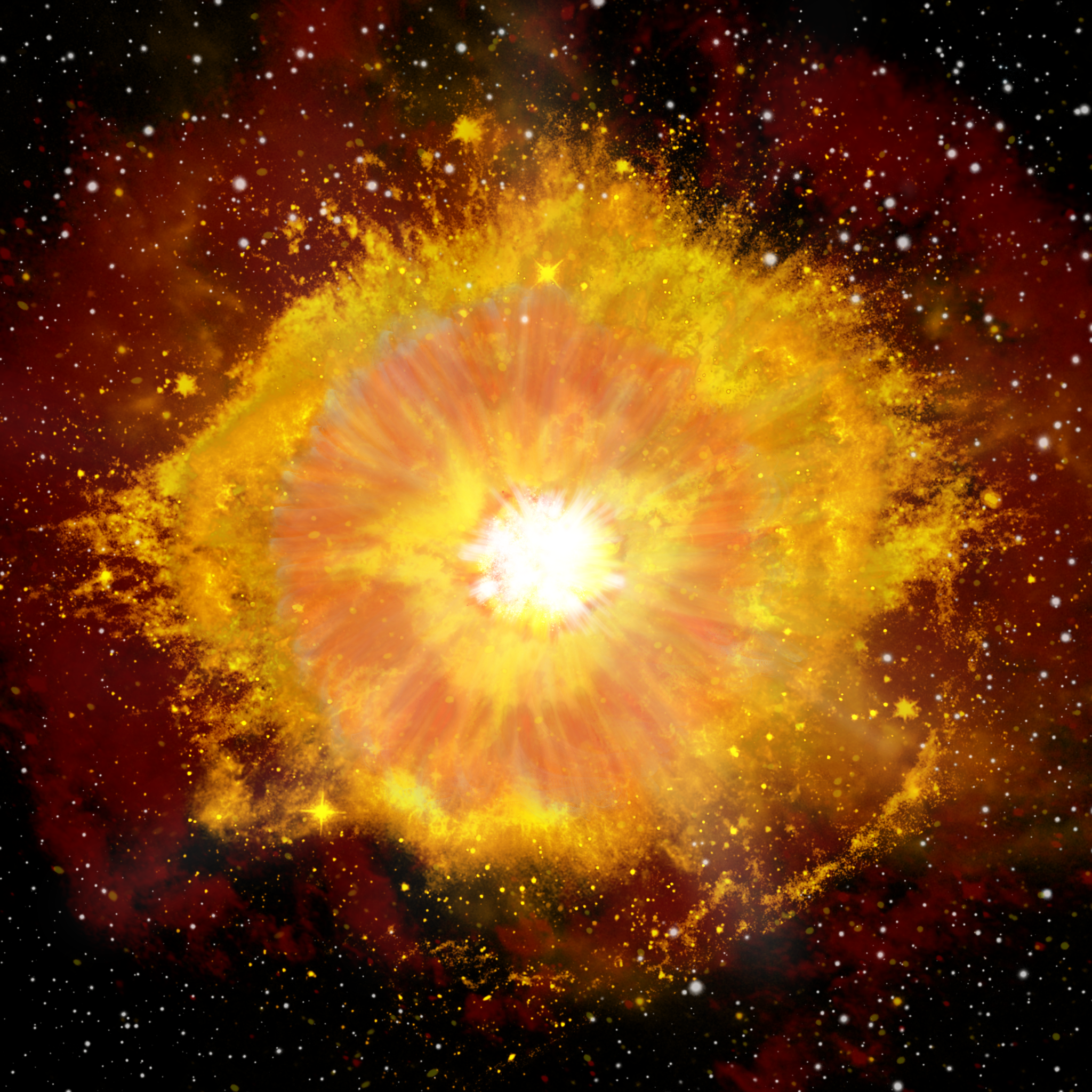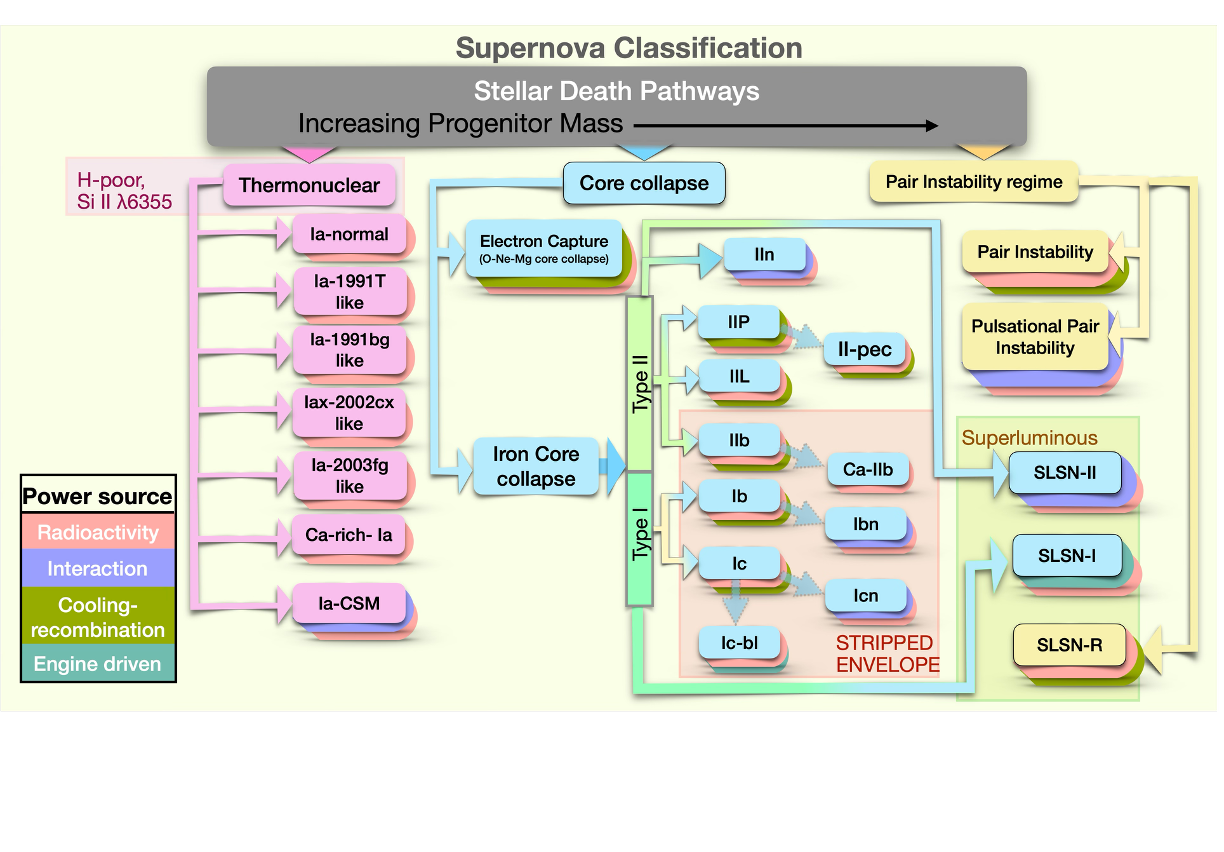



Most of this material is taken from a review article appearing in the journal Universe.
Supernovae are among the most energetic phenomena in the universe, marking the explosive demise of stars. Stars with initial masses ≈3–8 M⊙ end their lives as sufficiently massive (≈0.9–1.1 M⊙) carbon–oxygen white dwarfs, which in close binaries may accrete mass until approaching the Chandrasekhar limit (≈1.4 M⊙), leading to thermonuclear (Type Ia) supernovae. More massive stars (≳8 M⊙) proceed through advanced burning stages, form iron cores, and undergo core collapse, producing neutron stars or black holes and launching core-collapse supernovae.

Figure 1. A massive star loses mass during its evolutionary phases and creates circumstellar medium (CSM).
Supernova classification is purely observational, primarily based on optical spectra and light curves. Ia supernovae (thermonuclear) spectra are devoid of hydrogen and show the presence of strong Silicon lines. While these supernovae are expected to be standardizable candles, observations have revealed significant diversity based on spectral features, light curves, and luminosity. Core collapse supernovae are generally classified based on the presence of hydrogen (Type II) or the absence of hydrogen (Type I) in their spectra. Amongst type II SNesupernovae class, optical lightcurves further subclassify them into Type IIP (SNe IIP) and IIL (SNe IIL). Modern untargeted surveys reveal a continuum of decline rates between the two traditional subclasses, suggesting the IIP/IIL division is phenomenological rather than being physically discrete. Type I subclass of core collapse supernovae (SNe I) are further divided into Types Ib and Ic (SNe Ib and SNe Ic, respectively). SNe Ib show strong He-I lines and are expected to come from helium stars or Wolf-Rayet (WR) stars, likely in a binary system. Lack of hydrogen as well as helium is a trademark of SNe Ic, revealing that their progenitors are stripped off of both hydrogen and helium layers at the time of explosion. In addition, a transitional category between SNe IIL and SNe Ib has been defined as Type IIb SNe (SNe IIb), which are thought to come from progenitors with partially stripped hydrogen envelopes. SNe IIP, IIL, IIb, Ib, and Ic are considered to have progressively increasing stripping of the progenitor off its layers. Some core collapse are surrounded by dense circumstellar medium and show narrow emission lines in the optical spectra, considered to be arising from the dense unshocked circumstellar medium. They are marked with a suffix "n", such as type IIn, Ibn and Icn. In addition, we have exotic broad-line Ic supernovae, electron-capture supernovae, superluminous supernovae, pair-instability supernovae and so on. While SN classification typically does not take into account the stellar death pathways, based on the existing understanding, we provide a detailed SNe classification placing the traditional classification along with the stellar death pathways.

Figure 2. Supernova classification scheme combining traditional classification along with stellar death pathways. Two most significant luminosity power sources are mentioned for each subtype.